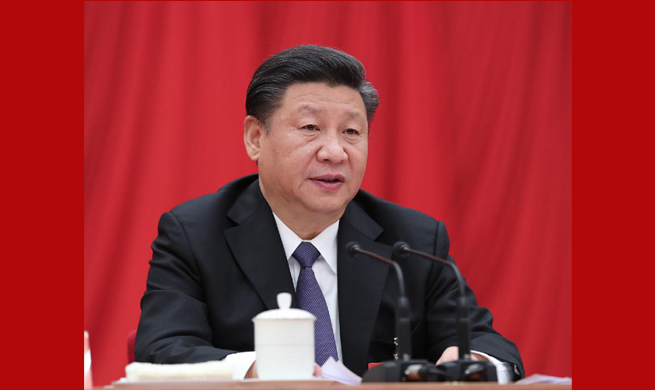BEIJING, March 1 (Xinhua) -- China is rapidly becoming a world scientific and technological innovation leading power, Minister of Science and Technology Wan Gang told a news briefing Monday.
The following are a group of facts and figures on China's science and technology development.
-- China's spending on research and development (R&D) was expected to reach 1.76 trillion yuan (about 279 billion U.S. dollars) in 2017, up 70.9 percent from 2012.
-- The country's spending on R&D accounts for 2.15 percent of its GDP.
-- China was ranked 17th on the national innovation index report by the Chinese Academy of Science and Technology for Development in 2017, rising from 20th in 2012.
-- China sent two satellites into orbit on a single carrier rocket for its domestic BeiDou Navigation Satellite System on Feb. 12, 2018.
The twin satellites, which form a network with four previously launched BeiDou-3 satellites, were the fifth and sixth satellites in the BeiDou-3 family.
-- China on Jan. 25, 2018 announced it was the first to successfully clone macaques from somatic cells using the method that made Dolly the sheep. It makes research with customized populations of genetically uniform monkeys a possibility.
-- China's first X-ray astronomical satellite Hard X-ray Modulation Telescope was launched in June last year and put into service for scientific research on Jan. 30, 2018 after finishing in-orbit tests.
-- China's first large amphibious aircraft AG600 completed its maiden flight in south China's Guangdong Province in 2017. The AG600 is the third member of China's "large aircraft family" following the large freighter Y-20 and large passenger aircraft C919, which made maiden flights in 2013 and 2017, respectively. The Y-20 entered service in China's airforce in July 2016.
-- The satellite Quantum Experiments at Space Scale, nicknamed Micius after an ancient Chinese philosopher, was launched in 2016. In 2017, Chinese scientists achieved quantum key distribution from the satellite to the ground, and quantum teleportation from the ground to the satellite, based on experiments with Micius.
-- The China-based FAST, the world's largest single-dish radio telescope, discovered three new pulsars in 2017, according to the National Astronomical Observatories of China. So far, FAST has identified a total of nine pulsars since its trial operation began in September 2016.
-- China's dark matter detection satellite Wukong (Monkey King) has demonstrated it is the most powerful space probe for high-energy cosmic rays. It has the highest energy resolution and particle identification ability, perfect for searching for traces of the annihilation or decay of dark matter particles, scientists say.
-- China's manned submersible Jiaolong set a record by diving to a depth of 7,062 meters during tests in the Mariana Trench in June 2012.
-- By the end of 2017, China had 25,000 kilometers of high-speed railway, accounting for 66 percent of the world total.
-- China invested 82.3 billion yuan in fundamental research in 2016, up 65 percent from 2012.

















